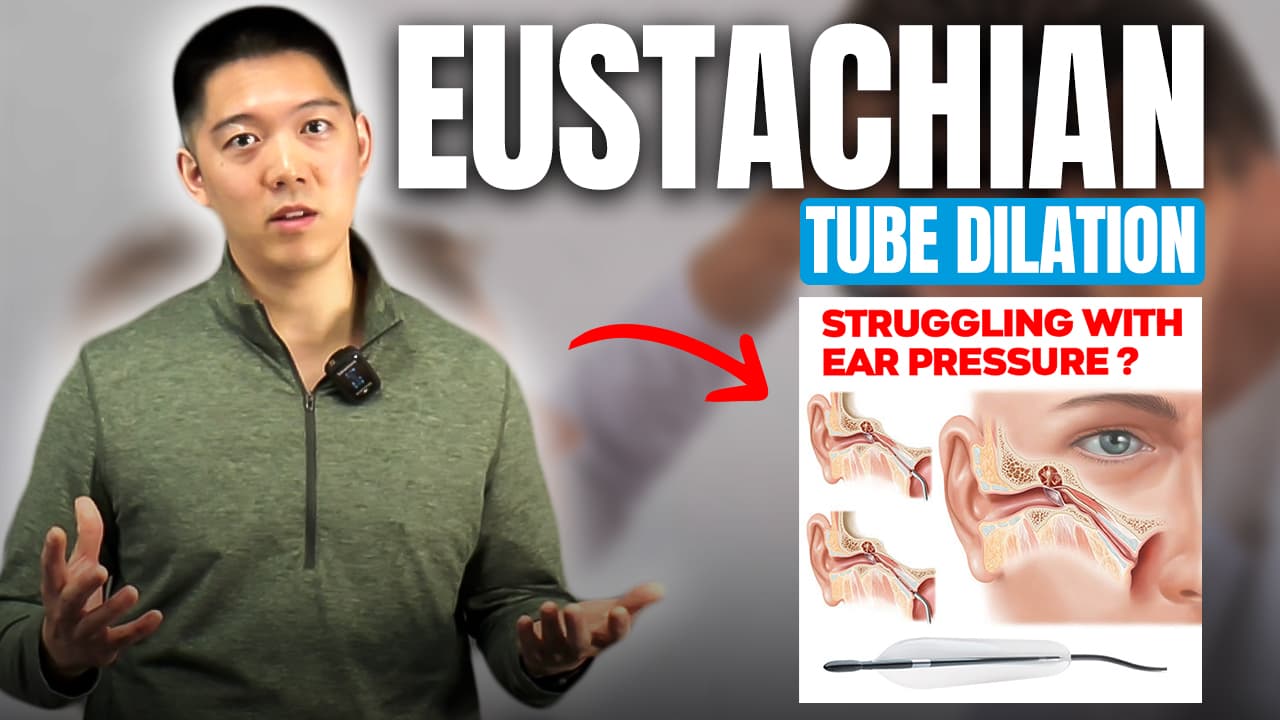Eustachian Tube Balloon Dilation: Treating Chronic Ear Pressure & Fullness
November 5th, 2024 | 3 min. read

If you've ever experienced persistent ear fullness, difficulty popping your ears, or recurring ear pressure, you might be dealing with Eustachian tube dysfunction. This comprehensive guide explores an innovative treatment option - Eustachian Tube Balloon Dilation - and how it's helping patients find relief from chronic ear problems.
Understanding the Eustachian Tube: Your Ear's Natural Pressure Regulator
The Eustachian tube plays a crucial role in maintaining proper ear health. This small but vital passageway connects your middle ear to the back of your throat, helping regulate pressure and drain fluid. When functioning correctly, it opens and closes naturally, especially during activities like yawning or swallowing. However, when this mechanism fails, it can lead to various uncomfortable and potentially serious conditions.
Ready to Find Relief from Chronic Ear Pressure?
Schedule Your Consultation Today!
Common Symptoms of Eustachian Tube Dysfunction
According to Dr. Oliver Chin, an experienced ENT specialist at Houston ENT & Allergy, patients with Eustachian tube dysfunction often experience:
- Persistent feeling of ear fullness
- Difficulty equalizing ear pressure during flights
- Discomfort during weather changes
- Problems while scuba diving or swimming
- Recurring middle ear fluid
- Hearing difficulties
- Tinnitus (ringing in the ears)
Diagnosing Eustachian Tube Problems: A Comprehensive Approach
Before considering any treatment, proper diagnosis is essential. The diagnostic process typically includes:
1. Comprehensive Medical History
- Duration of symptoms
- Aggravating and alleviating factors
- Previous treatments attempted
- Impact on daily activities
2. Physical Examination
- OTO microscopy examination
- Evaluation of ear canal and eardrum
- Assessment of middle ear structures
3. Diagnostic Testing
- Audiogram with tympanometry
- Eardrum vibration analysis
- Nasal pharyngoscopy when needed
- CT scans or MRIs in specific cases
Understanding Balloon Dilation: A Minimally Invasive Solution
Eustachian Tube Balloon Dilation represents a significant advancement in treating chronic ear pressure and related conditions. This innovative procedure adapts technology previously used in cardiac and airway procedures for ear-related issues.
How the Procedure Works
The balloon dilation procedure involves:
1. Local anesthesia application
2. Careful catheter insertion
3. Controlled balloon inflation
4. Gentle dilation of the Eustachian tube
5. Catheter removal and recovery
Key Benefits of Balloon Dilation
- Minimally invasive approach
- Performed in-office
- Short procedure time (10-45 minutes)
- Quick recovery period
- Same-day return to normal activities
- Low risk profile (less than 1%)
Ideal Candidates for the Procedure
Not everyone with ear pressure issues needs balloon dilation. Ideal candidates typically:
- Have chronic Eustachian tube dysfunction
- Failed conservative treatments
- Experience recurring middle ear fluid
- Have difficulty with pressure equalization
- Show specific anatomical indicators
- Are generally healthy enough for the procedure
Recovery and Expected Results
Recovery from Eustachian tube balloon dilation is typically straightforward:
Immediate Post-Procedure Period:
- Minimal discomfort
- Able to drive home independently
- Can return to work same day
- Minor restrictions on activities
Long-Term Results:
- Some patients experience immediate improvement
- Others may see gradual progress over several months
- Success rates vary based on individual factors
- May prevent more serious complications
Additional Applications and Benefits
Beyond treating basic Eustachian tube dysfunction, balloon dilation can also help with:
1. Eardrum Perforation Cases
- Supporting healing processes
- Preventing recurrence
- Improving surgical outcomes
2. Chronic Ear Drainage
- Addressing underlying causes
- Reducing infection risk
- Improving quality of life
3. Cholesteatoma Management
- Supporting treatment plans
- Reducing recurrence risk
- Protecting vital structures
Prevention and Maintenance
After successful treatment, maintaining ear health involves:
1. Regular Follow-up Care
- Scheduled check-ups
- Monitoring progress
- Addressing concerns promptly
2. Lifestyle Modifications
- Managing allergies
- Proper ear care during activities
- Preventive measures during travel
3. Ongoing Management
- Recognition of warning signs
- Early intervention when needed
- Communication with healthcare providers
The Importance of Professional Evaluation
While Eustachian tube balloon dilation shows promising results, proper patient selection is crucial. A thorough evaluation by a qualified ENT specialist helps:
- Determine appropriate treatment options
- Assess potential risks and benefits
- Create personalized treatment plans
- Set realistic expectations
- Monitor progress effectively
Looking to the Future
As medical technology continues to advance, treatments for Eustachian tube dysfunction are likely to become even more refined. Current research focuses on:
- Improved diagnostic tools
- Enhanced surgical techniques
- Better understanding of underlying causes
- More targeted treatments
- Long-term outcome studies
Finding Relief from Ear Pressure and Fullness
If you're experiencing chronic ear pressure, fullness, or related symptoms, understanding your treatment options is crucial. Eustachian tube balloon dilation represents a significant advancement in treating these conditions, offering hope to many patients who haven't found relief through traditional methods.
Take the First Step Toward Better Ear Health
Don't let chronic ear pressure and fullness impact your quality of life. Schedule a consultation with a qualified ENT specialist to discuss whether Eustachian tube balloon dilation might be right for you.
Topics:
